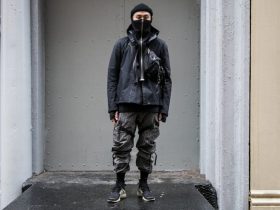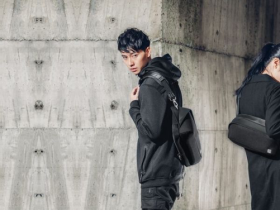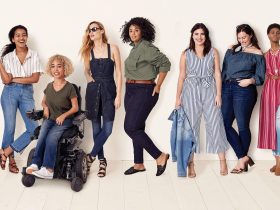In recent years, the fashion industry has undergone a notable transformation, shifting towards a more sustainable and environmentally conscious approach. As consumers become increasingly aware of the impact their choices have on the planet, eco-friendly fashion has emerged as a compelling option, making it possible to express personal style while prioritizing the health of our Earth.
In this article, we’ll explore the principles of eco-friendly fashion, the innovative brands leading the change, and practical tips for building a sustainable wardrobe.whether you’re a seasoned eco-warrior or just starting to dip your toes into the world of sustainable style, join us on this journey to discover how each outfit can contribute to a greener, more sustainable future. Together, we can make mindful choices that not only elevate our wardrobes but also protect our planet for generations to come.
Understanding Sustainable fabrics and Their Environmental Impact

In the quest for eco-friendly fashion,understanding the various sustainable fabrics available is essential.These materials not only reduce the environmental footprint of clothing but also promote healthier production practices. Some of the most popular sustainable fabrics include:
- Organic Cotton: Grown without harmful pesticides or fertilizers, organic cotton helps to maintain soil health and reduces water usage.
- Bamboo: Naturally regenerative and requiring minimal resources, bamboo is a fast-growing plant that produces a soft, breathable fabric.
- Hemp: Known for its durability and low environmental impact, hemp requires little water and can thrive in poor soil conditions.
- Recycled Polyester: Made from post-consumer plastic bottles, this fabric reduces waste and energy consumption in its production process.
The environmental impact of these fabrics is significant when compared to conventional materials. Conventional cotton farming consumes vast amounts of water and frequently enough involves toxic chemical inputs,while synthetic fabrics like polyester are derived from petroleum,contributing to greenhouse gas emissions. To illustrate the contrast, consider the following table that highlights key aspects of sustainable vs. conventional fabrics:
| Sustainable Fabrics | Conventional Fabrics |
|---|---|
| Lower water usage | high water consumption |
| Biodegradable | Non-biodegradable |
| Less harmful chemicals | Toxic pesticides and fertilizers |
| Reduced carbon footprint | High carbon emissions |
The Role of Ethical Brands in Promoting Eco-Conscious Choices
Ethical brands play a pivotal role in guiding consumers towards making eco-conscious choices in the ever-evolving fashion landscape. By prioritizing sustainable practices, they foster a deeper connection with environmentally aware shoppers. Some of the key attributes that define these brands include:
- Openness: Clear interaction about sourcing materials and production processes.
- Fair Labor Practices: Commitment to ensuring safe working conditions and fair wages for all workers.
- Eco-Friendly Materials: Utilization of organic, recycled, or upcycled materials that minimize environmental impact.
- Longevity: Focus on quality over quantity, encouraging consumers to invest in lasting pieces.
Furthermore, these brands often engage in community initiatives that amplify the conversation around sustainability. By collaborating with local artisans and supporting global environmental causes, they inspire a shift in consumer behavior towards a more responsible lifestyle. Here’s a comparison of some notable ethical fashion brands and their initiatives:
| Brand | Key Initiative |
|---|---|
| Patagonia | Repair and reuse program for outdoor gear. |
| Eileen Fisher | Renew program that recycles clothing for new collections. |
| Reformation | Carbon footprint tracker for each garment. |
practical Tips for Creating a Sustainable Wardrobe
- Invest in Quality: choose well-made pieces that last longer, rather than fast fashion items that wear out quickly.
- Buy Second-Hand: Thrift stores and online resale platforms offer unique finds while reducing waste.
- Embrace Versatility: Select items that can be mixed and matched for various occasions, maximizing your outfit options.
- Research Brands: Support companies that prioritize sustainable practices in their production processes.
Another effective strategy is to organize your wardrobe effectively. A well-arranged closet can help you see what you have and what you truly need. Consider the following organization methods:
| Organization Method | Description |
|---|---|
| Seasonal Rotation | Store off-season clothes to make space for current season favorites. |
| Color Coding | Arrange clothes by color for a visually pleasing and easy-to-navigate wardrobe. |
| Functional Categories | Group items by activity (work, casual, formal) to streamline outfit selection. |
Embracing Secondhand and Upcycled Fashion for a Greener Closet
In a world increasingly aware of the environmental crisis, turning to secondhand and upcycled fashion offers a refreshing way to contribute to a greener planet while expressing your unique style. Shopping for pre-loved items not only reduces waste but also extends the life cycle of clothing,making it a sustainable choice. Thrift stores, vintage boutiques, and online resale platforms are treasure troves where you can discover one-of-a-kind pieces that tell their own stories. By opting for these alternatives, you can enjoy the thrill of the hunt while making a positive impact on the planet.
Upcycling takes sustainability a step further by transforming old garments into new, fashionable creations. This process encourages creativity and innovation, allowing you to craft unique items that reflect your personal aesthetic. Consider the benefits of embracing this trend:
- Less waste: Reduces landfill overflow by giving garments a second life.
- Unique style: Stand out with customized pieces tailored to your taste.
- Cost-effective: Save money while curating a stylish wardrobe.
- Support local artists: Many upcycled pieces are handmade by artisans in your community.
| Benefits | Description |
|---|---|
| Environmental Impact | Conserves resources and reduces carbon footprint. |
| Creativity | Encourages innovative approaches to fashion. |
| Connection | Builds community with local thrifting and upcycling initiatives. |
The Way Forward
As we wrap up our journey through the vibrant world of eco-friendly fashion, itS clear that every choice we make can contribute to a more sustainable future. By embracing eco-conscious brands, opting for timeless pieces, and exploring thrift stores, we can each play a pivotal role in reducing our environmental footprint while still expressing our unique styles. Remember, it’s not about achieving perfection but making thoughtful decisions that resonate with our values.
So, the next time you’re about to refresh your wardrobe, think about how your choices can impact the planet. Let’s continue to support sustainable practices, advocate for ethical fashion, and inspire others to join this vital movement. together, we can build a future where style and sustainability coexist beautifully, one outfit at a time. Happy dressing!










Leave a Reply